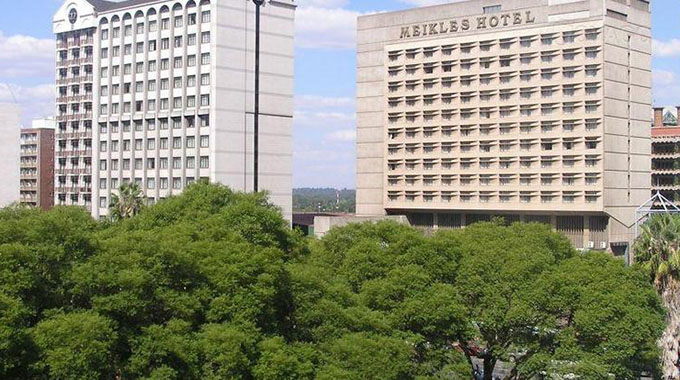Marowanyati Dam transforms Buhera

Rumbidzayi Zinyuke Manicaland Bureau
For years, communities in Buhera have survived on subsistence farming, but climate change has not spared the district, with rainfall patterns taking a turn for the worse in successive seasons.
Yields have shrunk, worsening poverty and other problems facing the farmers.
As a result, dependence on donor aid grew until some did not see the need to work the land for survival.
But all that is changing.
The construction of Marowanyati Dam has changed the face of farming as agricultural activities around the water reservoir have started transforming the lives of communities.
Marowanyati Dam is located on Mwerihari River, a perennial stream with an annual flow of 182 million litres.
The dam is now 96 percent complete in terms of normal construction and has 33 million cubic metres out of full supply capacity of 50 million cubic metres.
The outstanding issues include the construction of a 120-metre-long and 2-metre-high spillway sill and completion of outlet works.
So far, about 34 farmers at Murambinda Irrigation Scheme have been the biggest beneficiaries as they have been getting a constant supply of water from the dam for almost a year.
They are producing cash crops all year round, supplying Murambinda Growth Point with affordable green mealies, tomatoes, sugar beans, groundnuts, onions, among other produce.
Some of the farmers sell their produce in Mutare, although high transport costs have been a limiting factor.
Mr Livingstone Chigwende said they were making enough to feed their families.
“This scheme has been in existence for many years, but not everyone was motivated to work because we did not have a constant supply of water,” he said.
“Sometimes the canals would run dry because the water levels would have become too low. But since last year, we have been getting good water supplies and everyone is now producing.”
Murambinda Irrigation Scheme chairman Mr William Muridzi said the dam was a blessing to the community as most members were now self-sustainable and did not need donor funds.
“We used to have challenges to get water here, especially when we had droughts,” he said.
“We would write off most crops and count our losses, but now we are planting all-year round. We have something to show for having such a resource in our community.”
The scheme has 34 plot-holders and measures about 36 hectares, with plot sizes varying from 0,3ha to 2,3ha.
Mr Muridzi said the dam level had risen significantly following the heavy rains induced by Cyclone Idai last year.
As with many other farmers in the country, the harsh economic environment has brought about challenges.
“We are not getting as much fertiliser as we would need for a higher yield because of the ever increasing prices,” said Mr Muridzi. “If we could get assistance from Government for inputs, we could be producing more than we are doing now.
“We do not want to encourage a dependency syndrome, but we want people to get help to improve their yields so that they can continue to become more self-sustainable in the future.”
The resuscitation of Zimbabwe’s agricultural sector remains key to improving the livelihoods of ordinary Zimbabweans and irrigation development could be the answer as climate change has affected rainfall patterns.
Only three percent of the country’s agricultural activity is under irrigation and this has had an impact on output, highlighting the urgent need to put more effort in irrigation development.
More irrigation schemes are lined up to draw water from the reservoir.
According to Zimbabwe National Water Authority (ZINWA) Engineer Alouis Katsande, who is supervising the construction of the dam, there are plans to put up 1 249ha of land around Marowanyati Dam under irrigation.
“The total area to be irrigated is 1 249 hectares and the second priority after the existing scheme is Murambinda B, which is about 55 hectares,” he said.
“Others in the pipeline include Kwarire, which is 400 hectares, Murove A (240 hectares), Murove B and St Alban A and B.”
With the second irrigation scheme on the way, most families under Headman Mombeyarara, who were displaced to pave way for the construction of the dam, are set to benefit.
The headman, whose area hosts the bigger part of the dam, expressed optimism that once the second irrigation scheme was in place, his area would be set for development.
“We look forward to serious farming once the scheme is in place,” he said. “We want to produce enough to feed ourselves and eventually contribute to the country’s food security.”
Headman Mombeyarara said once work on the scheme commenced, the traditional leadership and relevant Government departments would come up with a criteria to choose the beneficiaries of the land under irrigation.
“Beneficiaries might get between 0,5ha and 1ha, so we are expecting a maximum of 100 beneficiaries and a minimum of 50.
“Inasmuch as we would want to accommodate everyone who was displaced when the dam construction began, we cannot do that, but we will definitely need to give them first preference. We will also have to consider other villagers so that everyone can benefit.”
Those to benefit under the scheme will need skills to be able to fully utilise the land.
According to Chief Makumbe, there is need to carefully allocate the land so that it goes to those people who are still capable of working it.
“We do not want to focus on the here and now only, we want to do something that will benefit the nation as a whole,” he said.
“We need to have a national outlook in terms of food security.
“We want this resource to change the lives of the people in Murambinda. Their livelihoods will be reliant on this water resource so we want to fully utilise it.”
Chief Makumbe expressed hope that the availability of vast water resources would attract industries to Murambinda Growth Point and activate growth in all sectors of the economy.











Comments